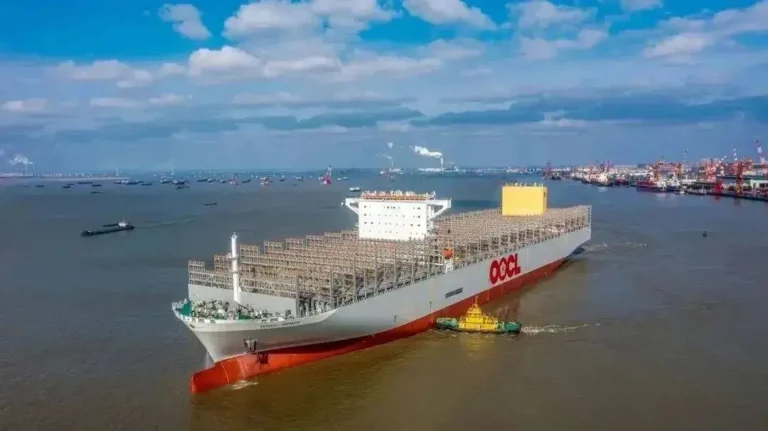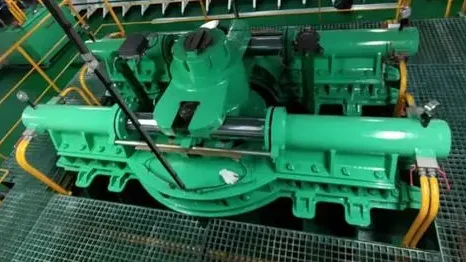The Wartsila RT-flex diesel engine does away with traditional apparatuses such as the exhaust valve actuation device (VEC device), fuel pump, camshaft and camshaft drive, reversing servomotor, fuel linkage, variable injection timing device (VIT device), and start air distributor. In their place, the following devices are integrated: ① Supply unit, which substitutes the original fuel pump and supplies high-pressure fuel and servo oil; ② Common rail device, utilized to establish fuel pressure; ③ Fuel injection unit; ④ Exhaust valve control unit; ⑤ WECS-9500 control system (now advanced to WECS-9520).
Common rail unit
1. Fuel common rail. The fuel common rail pipe contains high-pressure fuel ranging from 600 to 900 bar. During main engine operation, it is supplied by the high-pressure plunger fuel pump on the fuel supply unit. The fuel common rail pipe is heated by a heating pipe to maintain temperature. The pressure within the fuel common rail pipe varies with the load of the main engine. Each cylinder is equipped with a corresponding injection control unit (ICU). The WECS controls the injection of the ICU. The main control module (MCM) receives the main engine speed signal and the current pressure signal on the common rail from the cylinder control module (CCM). After calculation and processing, it outputs the drive signal for controlling the fuel pump actuator, enabling the fuel pressure output by the fuel pump to reach the pressure required by the current diesel engine speed. When the fuel pressure on the common rail is high, it is maintained stable through the fuel pressure control release valve. When the safety system detects a fault signal that endangers the main engine, it causes the fuel emergency stop valve to act and discharge the fuel. In the event of a fuel pump driver failure, it is connected to an appropriate position or moved to the highest position by a spring to become a quantitative pump. The remaining fuel pumps without failures still remain variable pumps and are controlled.
2.The servo oil common rail pipe contains servo oil filtered through a 6 μm filter, with a pressure ranging from 80 to 190 bar. This servo oil is supplied by the servo oil pump on the oil supply unit. The pressure within the servo oil common rail pipe varies according to the load of the main engine. Each cylinder is equipped with a corresponding valve control unit (VCU). The WECS controls the operation of the exhaust valve through the VCU.
The main control module (MCM) collects and controls the servo oil pressure signal of the fuel rail. It compares this signal with the given value. In case of a deviation, it utilizes the controller area network (CAN) bus to control the output of the servo pump through each cylinder control module (CCM), thereby regulating the pressure of the servo oil rail. Each CCM issues a command signal to the pressure controller inside the servo pump. Both servo oil and control oil are lubricating oils that have undergone additional filtration.
3.Parking valve, overpressure regulating valve, and safety valve. Emergency shutdown is accomplished through the action of the parking solenoid valve (the signal is transmitted by the main engine safety protection system rather than WECS). Specifically, the main lubricating oil on the upper portion of the piston is discharged, leading to a reduction in the pressure of the fuel common rail pipe and the shutdown of the main engine. The opening pressure of the overpressure regulating valve is approximately 1050 bars. The opening pressure of the safety valve is 1250 bars. The fuel is discharged to the overflow tank.
Control Module For WARTSILA Machines: Check Our Latest Inventory Now!
Our company has newly arrived inventory control modules suitable for WARTSILA models, including MCM (Main Control Module), CCM (Cylinder Control Module), FCM (Flex Control Module), and Defferential Pressure Gauge. In stock, we welcome inquiries from customers and friends.



